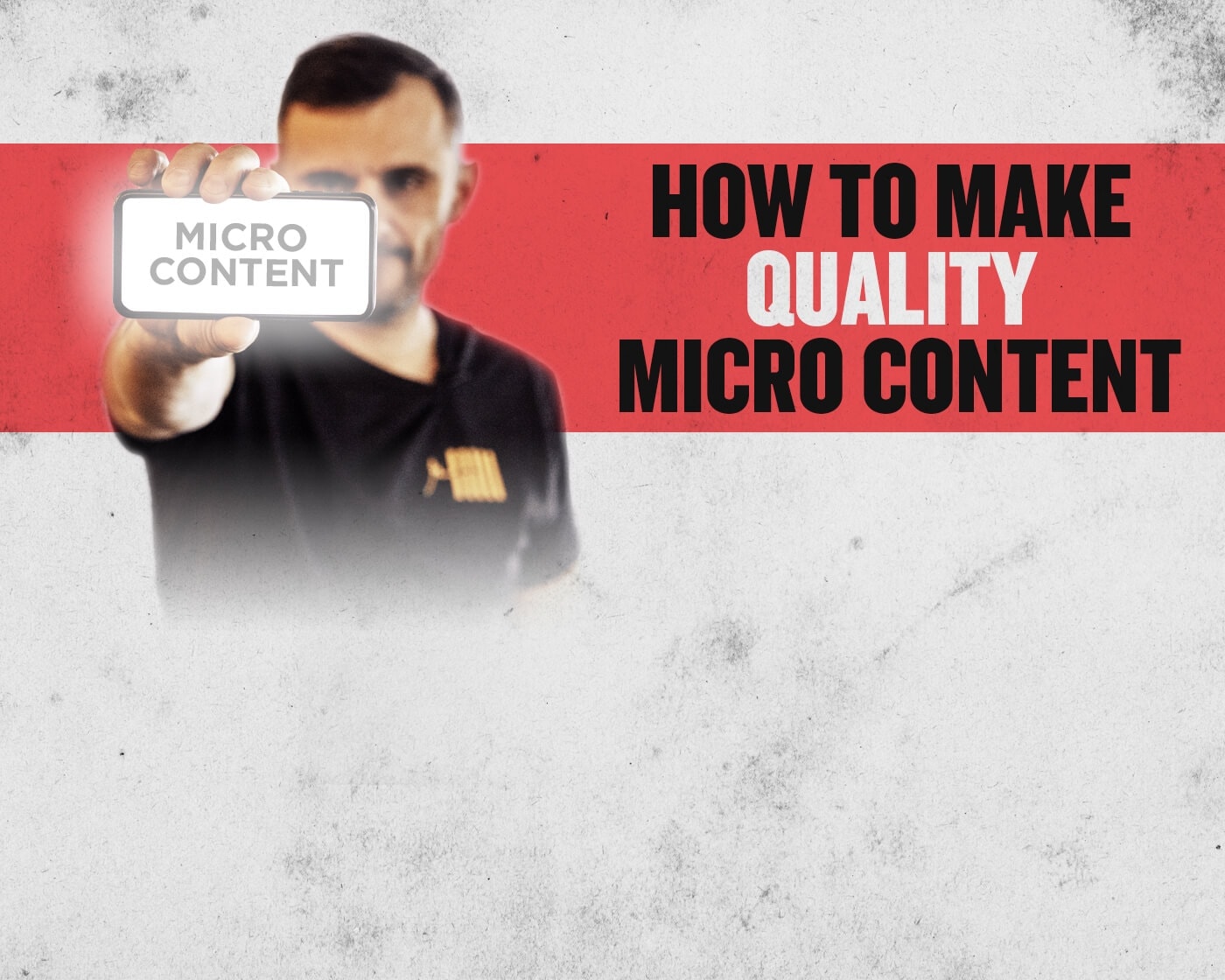The term “micro content” is something I started using three or four years ago. The notion was: content made specifically for the platform. You know, the videos, the pictures, the quotes, the written words that work on Facebook, Twitter, Tumblr, Pinterest, Instagram, Snapchat, and TikTok.
It was the context of the book, Jab Jab Jab Right Hook.
How You Can Create Good Micro Content
1. Quality Content Is Subjective
So, you want to know how to make good micro content and how to consistently get your team to do it? First of all, good content is subjective, right? Some people like Game of Thrones. Some people watch Game of Thrones and don’t like it (very few, I think, because it’s a very popular show) but you know it is still clearly subjective. That’s number one.
2. Your Team Will Learn Through Osmosis
Number two, once you get to a place where you can afford it, how do you get a team to start the process of creating micro-content for your or your brand?
When it comes to building the skills on a team, I wouldn’t say it’s about education.
I would say that, for me, scaling and getting my team to get there has a lot to do with what I call “osmosis.” That is, putting the knowledge into the “stream” versus making them attend a class.
Osmosis is also how you ensure your team is executing at the highest level from the top to the bottom – by letting them learn gradually from the environment and not being crippled when they’re “off” a little bit. For example, rather than over impose my will on creative output, I’ll let the market decide and let my employees learn from the outcome.
By the way, not everyone learns like me. My team and I wasted an enormous amount of time on senior people training junior people through osmosis. When we evolved into providing more products I realized, stuff (products, technology, services) to support people through a more structured learning process could be beneficial. Still, depending on the situation, I usually use osmosis.
3. Respect your audience
You’ve got to respect your audience. This means, you’ve got to respect the psychology of what they’re doing when they’re on the platform. I know a 40 year old woman has a different mindset when she’s on Facebook versus when she’s on Pinterest. That is what I keep in mind when I try to tell her a story, because I know I’m on Pinterest. On Pintrest, she has intent to shop and aspiration to shop. On Facebook, she’s keeping up with her world or consuming information. So I strategize around the psychology and the platform itself.
4. Make It About Them
When I say respect, I put out content that I think she will like versus what I’d like to accomplish. Yes, I’d like to sell rosé, but if I put it in a way that is more interesting to a mom, like five under $10 bottles of wine that help you unwind at the end of a full day with the kids, that would resonate better. Then you target eight-year-old kid moms.
Something like, 12 wines somebody who’s 38 will like and then targeting people that were born in 1982, could also work well. These are all strategies that will work. Add a very heavy Facebook or Instagram glamour’ shot of the wine at a nice angle. It’s that kind of stuff, stuff that’s cool and nice.
Respecting the audience, respecting the platform, and taking your agenda and making it third – that’s how you make great micro content.
That’s it for now! If you enjoyed that article it would mean a lot to me if you share it on Twitter.











